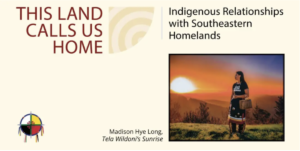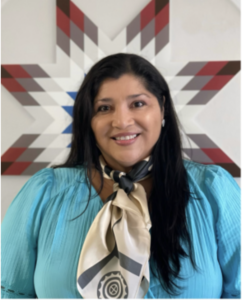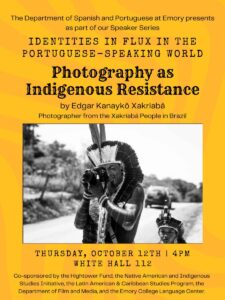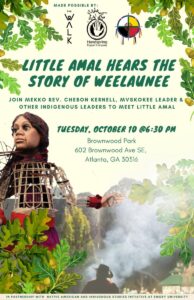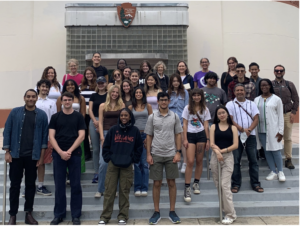
Emory students gathered at the stairs of the Ocmulgee Mounds National Historic Park.
We start with gratitude, saying “mvto” (thank you) to the Este Mvskokvlke (Muscogee People) for welcoming Emory students, faculty, and families to one of their most sacred sites in their ancestral homeland at the 31st Ocmulgee Indigenous Celebration on September 17, 2023.
Traveling from Emory to Ocmulgee Mounds National Historic Park for a special place-based and community-engaged learning experience, a first-time interdisciplinary cohort of thirty-five faculty and students from Dr. Debra Vidali’s Anthropology 190–Land, Life, and Place, Dr. Loren Michael Mortimer’s History 285–Introduction to Native American History, Heidi Aklaseaq Senungetuk’s Music 460RW–North American Indigenous Music and Modernity, and Emory’s Native American Student Association participated in a vibrant celebration of Southeastern Native American cultures and heritage. This marks the first time Emory University organized an official trip to the Ocmulgee Mounds National Historic Park.
Emory students experienced a diverse array of activities that showcased the rich heritage of the region’s Indigenous peoples. Traditional cultural crafts, captivating storytelling sessions, and educational programs provided students with meaningful connections to the living histories and thriving communities of diverse southeastern Native American people. “This was my first time at the Ocmulgee Mounds,” says senior Matowacipi Horse (C24’). “This was an incredible experience seeing the natural landscape, even in the ways it has been recreated to pay tribute to the original ancestral homeland. I think it was a beautiful step in the work of reparations. Seeing the stories–and even trying the food–it was incredible.”
This celebration represents a collaboration with the Muscogee Nation and the Ocmulgee Mounds Association to enact Mvskoke sovereignty and educate visitors about the Indigenous presence on the land. “It was really cool how we got to interact,” reflected Mira Maukadam (C27’), “and explore the mounds.”
Today, the mounds are a reminder of Muscogee origins, a site of exchange, and a symbol of their continued presence in their ancestral homelands. Marta Yavorsky Delgado (C27’) said “I loved seeing all the historic sites and all the trails.” Entering the mounds ground, history and anthropology students read interpretive markers “against the grain,” interrogating the biases and assessing historical accuracy.
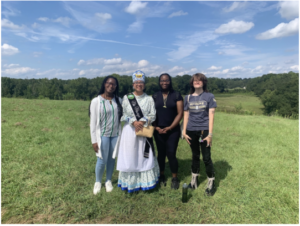
Jessanya Holness, Licia Brown, and Morgan Crosswhite enjoy a candid conversation with Miss Muscogee Chenoa Barnett.
In the Mvskoke creation story, the people emerged from a blinding fog, found another, and became a nation at Ocmulgee. Now, rising generations of learners made new connections with one another in the heart of this ancestral space. In one notable conversation atop the site’s largest mound, Emory students met Miss Muscogee Nation Chenoa Barnett who shared her experience as Miss Muscogee Nation and her goal to become a Mvskoke educator. As a student at the College of Muscogee Nation, she shared her college experiences, aspirations for the future, and life stories with her peers from Emory University.
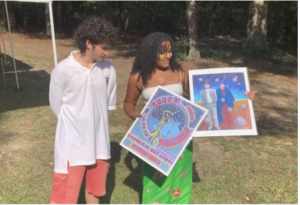
Royce Mann and Jaanaki Radhakrishnan admire prints by renowned Mvskoke artist Johnnie Diacon, whom they met the at the Indigenous Celebration.
The cultural programming centered on storytelling, music, stickball, education stations, food, and tours of the mounds. One food station sold frybread which students enjoyed. Neeraj Painitkar (C27) said they “loved coming to this festival and seeing Indigenous cultures so vibrant and alive. It’s just really inspiring.”
Students, faculty, and visitors engaged with each event presented at their own pace, learning through observations of the presenters and building connections with the individuals at the education tables. Carter Douglas-Brown (C27’) observed that “it was really cool to be here and to see all the things in person that we are learning about in class.”
Ocmulgee Mounds remains a space that gives life to Indigenous creativity. Dr. William Harjo (Mvskoke) shared a piece of music he worked on called Dragonfly Song which attracted dragonflies. Throughout the day, dragonflies gathered around passerbyers, strengthening the connection between the Mvskoke continuous knowledge and the ecological knowledge of the mounds. Ted Wilson (C25’) reflected, “it was really cool that we were able to come and
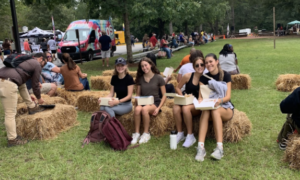
Students from Anthropology-190 enjoy lunch and stories from Dr. William Harjo.
experience this today with the Muscogee Nation. I’m really grateful that they came all this way to share their stories and traditions with us and it was a fun day to be here and be able to come here.”
Dr. Harjo also shared the story of the strawberry. First man and woman got into an argument resulting in the first woman leaving their home. For several days the first man waited for her return, but she never came back. After some time he went out to look for the first woman, passing by scattered white flowers as he went. Soon he had found her and they both were relieved to see each other. As they left together, strawberries bloomed on the flowers they passed. Strawberry has been a symbol of strengthening romance ever since.
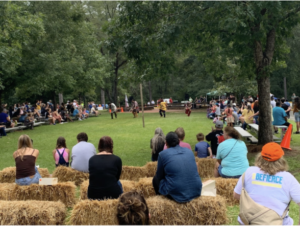
Emory students watch NVNVHI Warriors of the Eastern Band of Cherokee perform the Warrior’s Dance.
NVNVHI Warriors of the Eastern Band of Cherokee Indians shared their efforts to pass on their way of life to the next generations through the ever-present teachings of the elders. Lessons are passed down wherever the elders and youth are together and memories or instructions are rekindled. The NVNVHI Warriors of the Eastern Band of Cherokee performed the Warrior’s Dance, one of the oldest ceremonial dances passed down across generations.
Emory Art and Social Justice Fellow Heather “Bird” Harris led a group of students onto the nature trail for a Radical Noticing Walk. This is a part of her wider work with the Arts and Social Justice Program and her “Land as Living Memory” project with students in History-285: Introduction to Native American History.
Emory students continued their work of relationship building and place-based inquiry back on campus. Robin Barker, Lead Interpretive Ranger for Ocmulgee Mounds, made a virtual class visit to Anthropology 190 on September 27. Students shared their experiences and key teachings from their participation in the Indigenous Celebration. Barker updated students on the ongoing work of consultation with Tribal nations as part of the park’s effort to repair relationships, revise interpretive wayside markers, and bring existing exhibits into compliance with the Native American Graves Protection and Repatriation Act. Students were welcomed to share their deeply researched critical analysis of interpretive wayside markers, actively participating in a generative dialogue about place-based storytelling and decolonial stewardship of National Parks. Ranger Barker invited students to continue the conversation in person at their next visit to Ocmulgee Mounds or consider continuing this work through future internships or volunteer opportunities on-site.
This special experiential learning opportunity was made possible with support and co-sponsorship from the Native American and Indigenous Studies Initiative, the Department of Anthropology, the Music Department’s Friends of Music Student Research fund, Emory College of Arts and Sciences pedagogy mini-grants, and the Department of History.
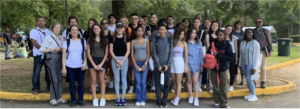
Emory students, faculty, and family at the end of an action-packed day of experiential learning at Ocmulgee Mounds.
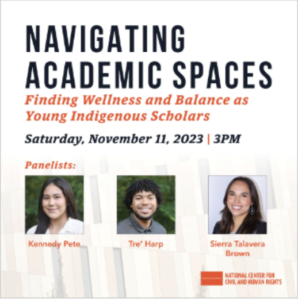 Click here to register for the event: link. Tickets are free.
Click here to register for the event: link. Tickets are free.
